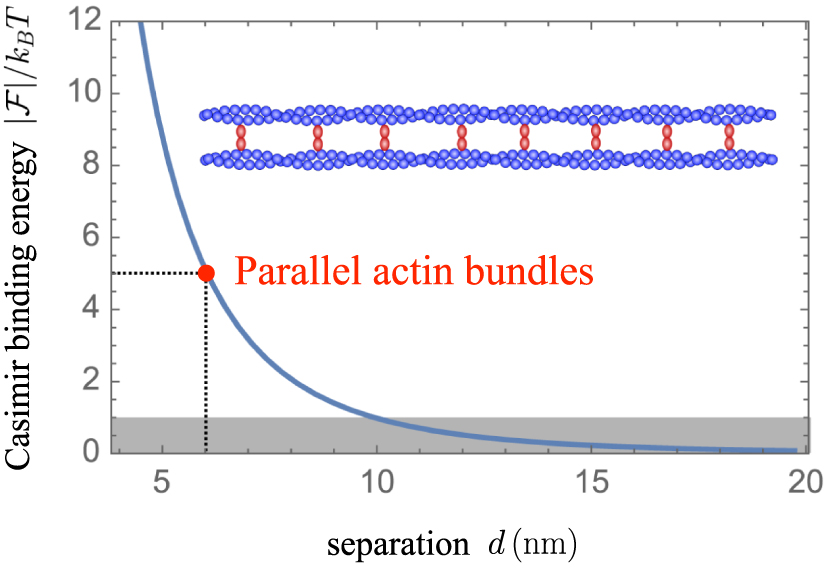Universal Casimir attraction between filaments at the cell level
Numerical simulations reveal that long-range interaction between objects in an ionic fluid, via electromagnetic field fluctuations, plays an important role for filamentary objects, with implications for our understanding of the self-organization of cellular structures.
Biological fluids are media where charges abound, in the form of salts or ionized molecular species. However, it is commonly accepted that electromagnetic interactions have a very short effective range in the cell, due to the effective screening of forces that a charged medium achieves at long range: thanks to a spatial organization of charges of opposite signs, the medium appears at mesoscopic scales as essentially neutral, where effective forces of electrostatic origin are very weak.
In a recent work, a collaboration involving the Gulliver laboratory, the Laboratoire Kastler Brossel and colleagues at UC Davis (USA), Jülich (Germany), EPFL Lausanne (Switzerland) and the University of Rio de Janeiro (Brazil) challenges this common view, which could have important consequences for understanding the organization of biological media on a cellular scale. Using numerical simulations, the authors show that some electromagnetic modes that can propagate in the ionic liquid (transverse modes) are not affected by screening. Fluctuations in these modes are responsible for a long-range interaction called the Casimir force, recently measured between two dielectric spheres in salt water. In this geometry, however, the interaction only exceeds the energy of the thermal fluctuations naturally present in the liquid when the spheres are very close together.

Figure: Casimir binding energy |F| is plotted as a function of the separation distance d (nm) between two actin filaments, each with a radius of 3 nm and a length of 15 μm. The value of |F| is expressed in units of the thermal energy kBT, and the area where |F| < kBT is shaded gray. Binding energies above the shaded area are expected to play important roles, which is the case for parallel actin bundles found in cells, where filaments are separated by 6 nm (red marker). The inset shows a diagram of two filaments (blue) in a parallel actin bundle. Cross-linkers are shown in red © B. Spreng et. al. and The New Journal of Physics (CC-BY 3.0 license).
This new paper studies the geometry of two dielectric cylinders in salt water, and the authors show that the Casimir interaction in this case is proportional to the length of the cylinders, giving it a much greater intensity. Thus, the binding energy between two parallel actin filaments far exceeds the energy of thermal fluctuations in a biologically relevant situation, namely when these filaments are grouped together in bundles within the cell.
Moreover, this interaction exhibits universality properties as it does not depend on the detailed dielectric properties of the filaments and the solvent, making the results of this work applicable in multiple configurations of biological or physico-chemical interest involving cylindrical structures. The long range of Casimir interactions is indeed likely to have important effects on the cohesion and self-assembly of filamentary structures in the environments where they are present.
These results are published in New Journal of Physics.
For further information
- “Universal Casimir attraction between filaments at the cell scale”, B. Spreng, H. Berthoumieux, A. Lambrecht, A-F. Bitbol, P. Maia Neto, et S. Reynaud, New J. Phys. 26, 013009 (2024)
Archives ouvertes : arxiv , hal - See also: CNRS Physique news (in French)
